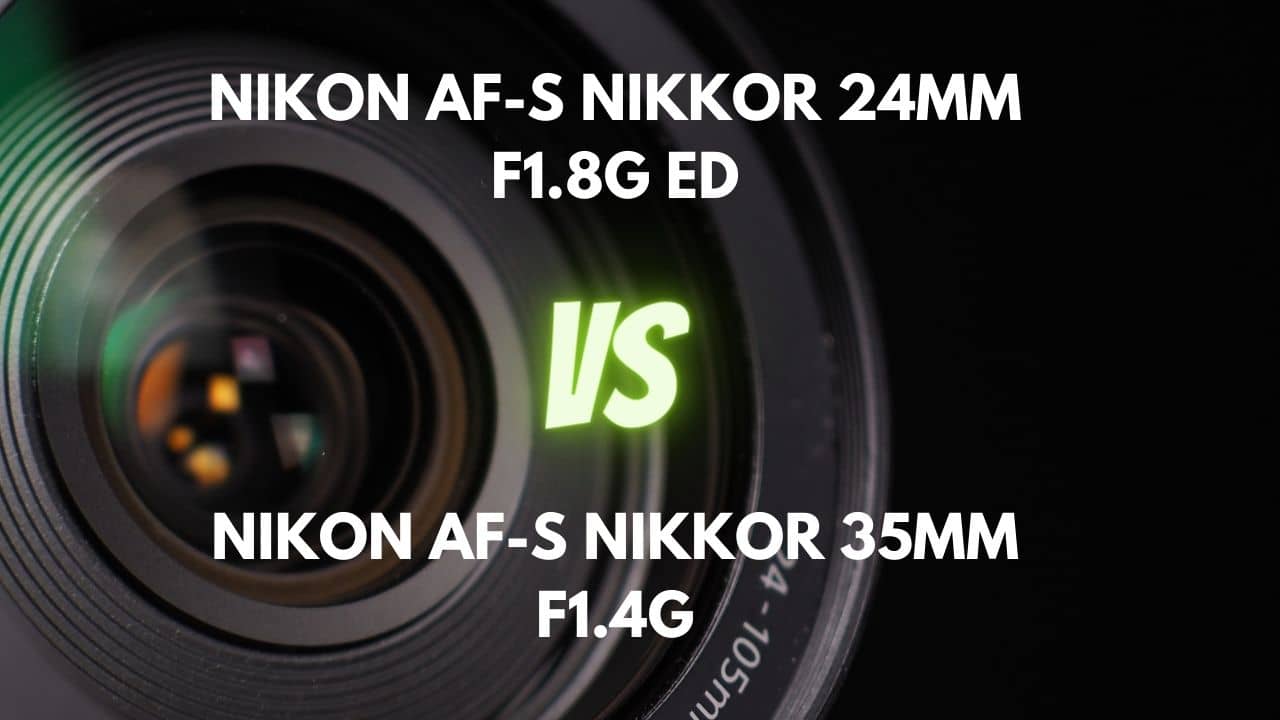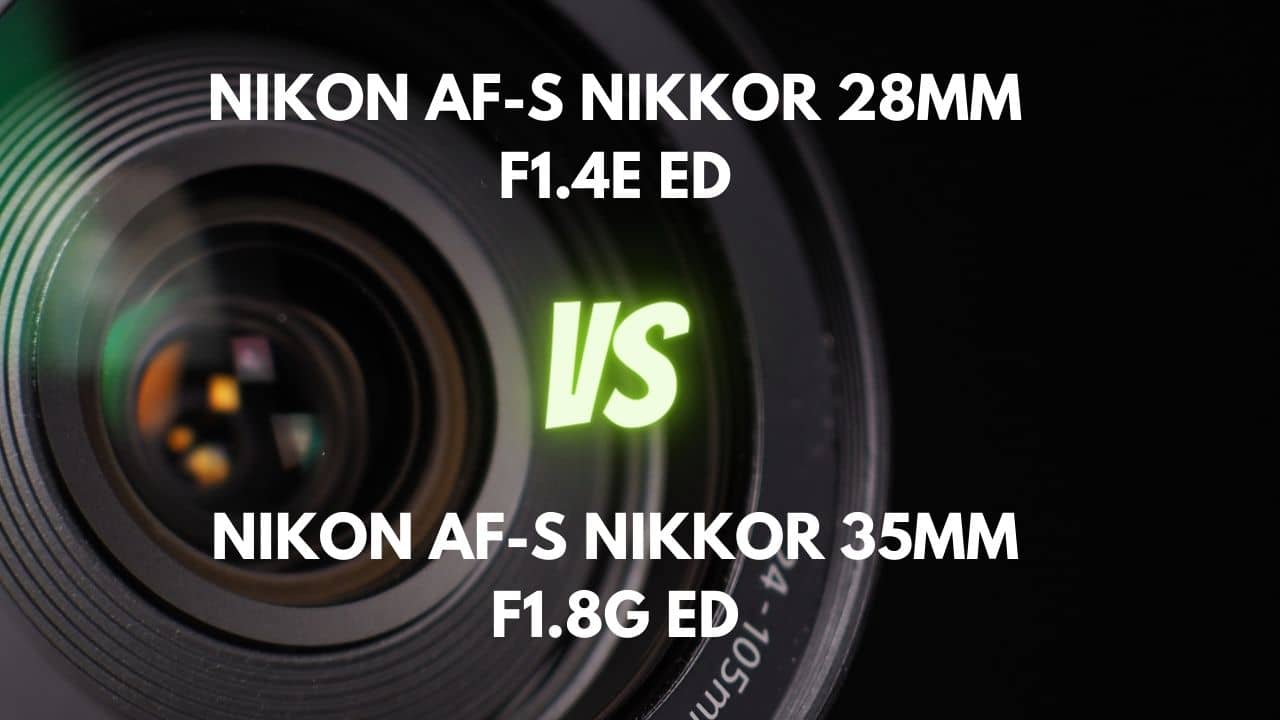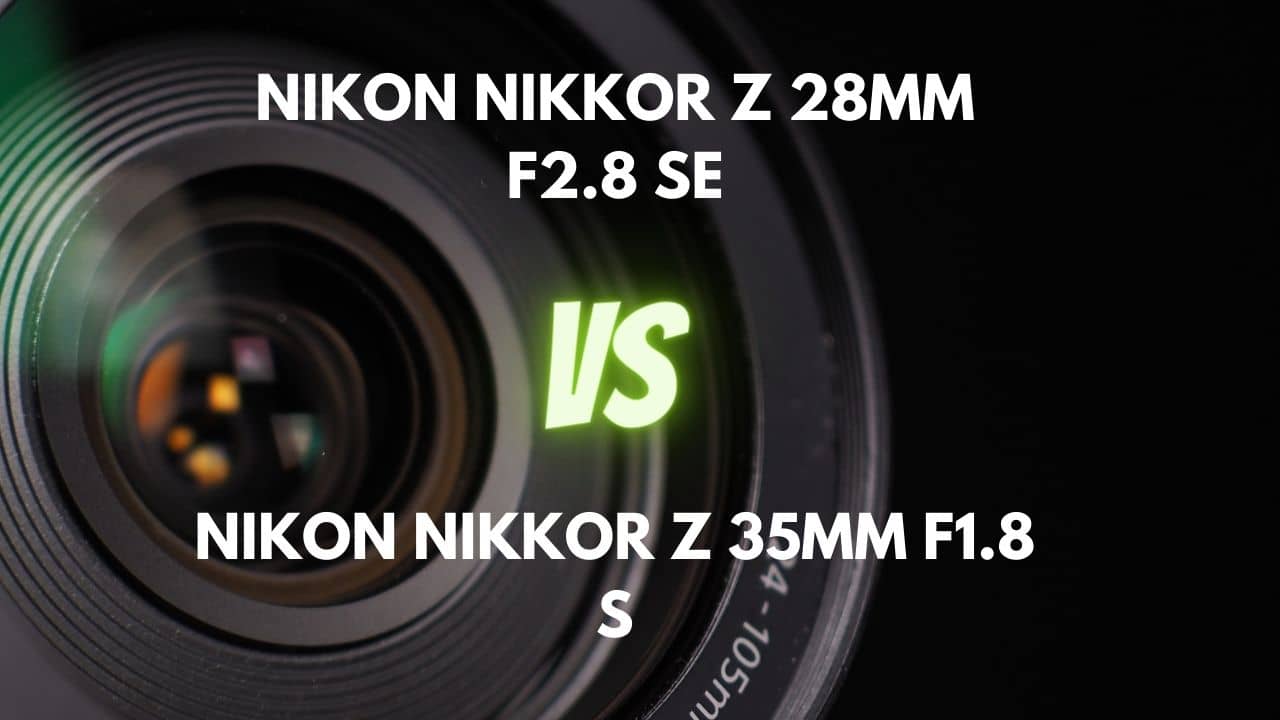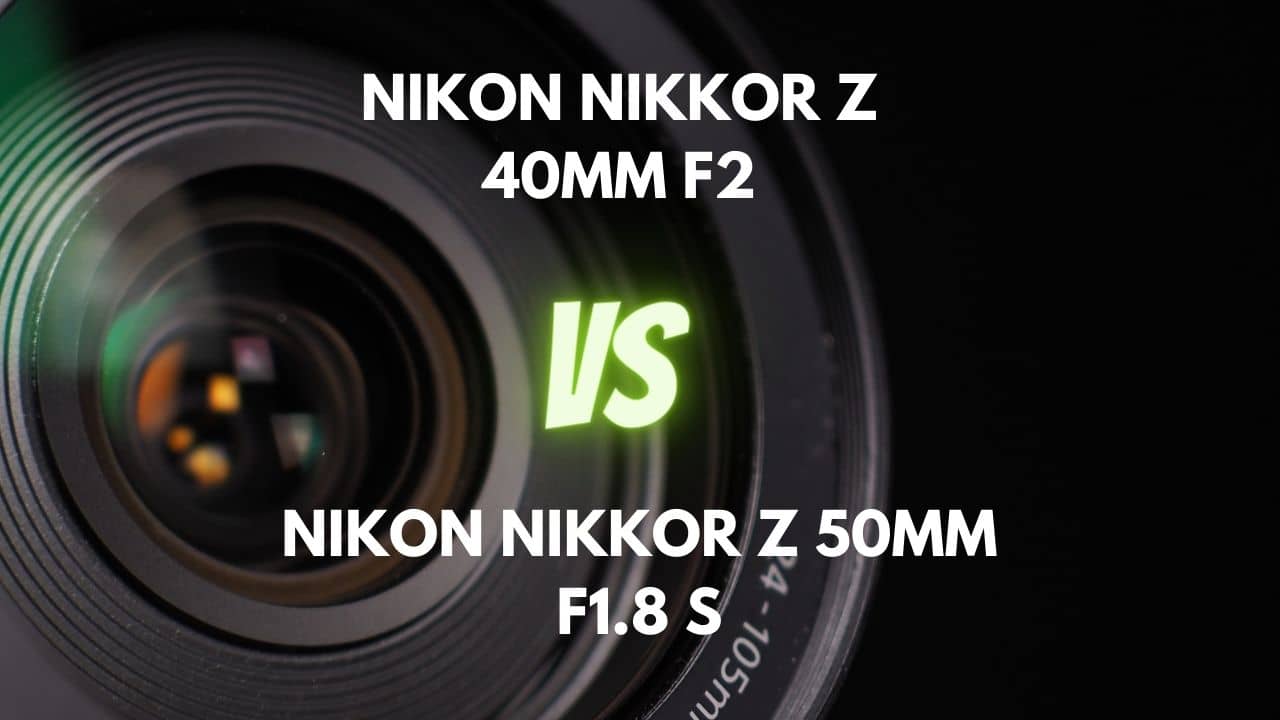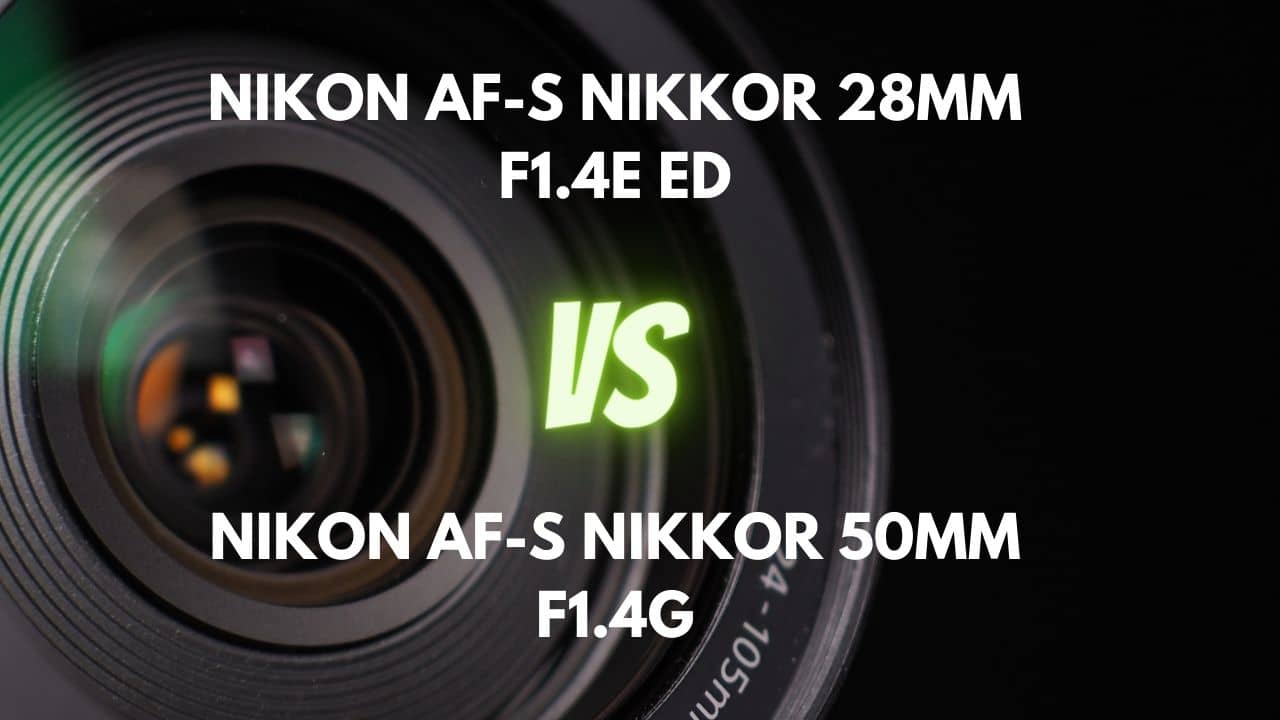Introduction
We have often spoken about or read about the 35mm lens. Many among us may have also used the 35mm lens to shoot images.
The 35mm lens is a standard lens that’s often taken in the same context as the 50mm prime. They’re, however, miles apart and have different positives and negatives regarding shooting images.
In this discussion, we’ll look at the 35mm lens and study the many facets of using a 35mm lens in different shooting situations.
What is a 35mm lens?
A 35mm lens is best explained as a standard prime and one that gives optically a similar focal length as the human eye gives. The 35mm is a shorter focal length than the 50mm, and it has the power to get in closer to a subject than a 50mm lens.
Does crop factor affect a 35mm lens’ focal length?
The question is best asked in this way – does a 35mm lens or, for that matter, the focal length of any lens change when it’s mounted on a crop camera?
There are many confusions and misconceptions in photography. Especially around the focal length of a lens, and this happens to be one of the primary confusions.
Many feel that the focal length of a lens changes when the lens is mounted on a crop camera. This isn’t the case. The focal length remains the same. But before elaborating on that point, let’s first understand what focal length is.
Focal length is the distance, measured in millimeters, between the optical center of a lens and the lens’s image towards the back of the camera when the lens is focused at infinity. The optical center of the lens is where the light rays converge to form a sharp image of the subject.
The image plane is the digital sensor or the film medium at the back of the camera where the light rays hit to form the image.
Prime lenses come with a single focal length that does not change. On the other hand, zoom lenses can change this physical distance between the converging point of light and the image plane at the back of the camera. This is why they have a variable focal length.
The confusion about why we think of crop factor and the changing focal length is that not all cameras use the 35mm sensor size. Back in the days of film photography, most photographers shot with 35mm of film. Please note that this 35 indicates the width of the film, which measures 35mm, even though the actual film strip measured 36mm x 24mm.
The 35mm format was the most dominant format, especially when film photography was in its heyday. Some people shot using medium and large cameras, but those were few and far between. Things started to change when digital sensor cameras came about. To make sensors more affordable, smaller sensors were manufactured instead of larger ones. This led to the creation of crop sensors.
Here it must be mentioned that the crop factor was already prevalent during film photography, except that nobody paid that much importance to it.
When we look through the viewfinder of a crop camera (a camera with a smaller sensor than that of a 35mm camera), we look at a smaller field of view. When mounted on a crop camera, a lens that offered an angle of view of 63 degrees on a 35mm camera suddenly offers a much smaller angle of view.
This is why we feel that the focal length has changed, and in the case of a crop camera, the focal length has increased because the angle of view has shortened.
However, the focal length has not changed and has remained the same. We’re now only using a shortened version of the frame that’s captured by the lens and sensor combination.
Is a 35mm lens a wide-angle lens?
The 35mm is the minimum focal length for considering a wide-angle lens. If you’re looking to shoot with a 35mm lens, you will need a full-frame camera to use the angle of view provided by this lens. Using a crop camera, the 35mm lens will become 52.5mm on a 1.5x crop factor. With a 1.6x crop factor, the focal length will become 56mm.
In other words, using a 35mm lens on a 35mm full-frame camera will offer you a field of view that is commensurate with wide-angle.
If you use the same lens on a crop sensor camera, the effective focal length will change, which will cause the field of view to become narrower. This means that the lens will no longer provide a wide-angle view.
Why are 35mm lenses so popular?
There are several reasons why the 35mm focal length is so popular among photographers.
Angle of View
With an angle of view of 63 degrees, the 35m is one of the most popular standard prime lenses available to a street photographer. Because of the wide angle of view, the lens captures much of the scene in front of it.
Versatility
Also, the lens is suitable for many other diverse photography genres. You can use it for capturing weddings, group shots, architecture, and interiors. You can also use this lens for shooting travel photos.
Video Shooting
The 35mm, because of the shallow depth of field possible with this lens and the resulting cinematic shots, is often considered a good choice for shooting videos.
If you can keep your subject right around the middle of the frame and then use the wide-open aperture, you can bring everything in the background to blur.
Subject in Context
Since wide-angle lenses tend to push things further away, much of the background will appear smaller and still decently recognizable. So the background blur will not be like the one you can get with an 85mm or a 105mm lens.
Little to No Distortion
The 35mm has very little distortion if you know how to use this lens. This is one of the main reasons the lens is so suitable for architecture and interior shots. The lens can be helpful in shooting portraits if you don’t get too close to your subjects.
Forces You to Get Close
Between the 50mm prime and the 35mm, the second lens forces you to get close to your subjects.
Although we don’t recommend getting too close because distortion will start to creep in, and your subjects’ facial features will look weird.
However, when you get a little closer, you’re forced to be within the subject’s comfort zone, and there is an undeniable interaction between you and the subject you’re photographing.
Interaction is often missing with a 50mm prime because you’re a few steps back. This can only happen with a wide-angle lens.
Low-light Capability
A 35mm is invariably a fast aperture lens. It has a maximum aperture of f/1.8.
There are some 35mm lenses that are f/2 and some which are f/1.4 and even wider. However, even an f/1.8 aperture lens is a great photo tool.
Especially when you’re shooting in low-light conditions, where lenses such as the 18-55mm f/3.5-5.6 or the 24-120mm f/4 lenses struggle big time, the 35mm f/1.8 makes mincemeat of the situation and captures images that are seemingly impossible with those slower lenses.
Compact and Lightweight
One major reason the 35mm is so in-demand is that the 35mm is a lightweight and compact design.
If you’re looking for a single lens that can help you capture a lot of different genres of photography, the 35mm is a good fit, along with the 50mm that comes a close second. Or is it the other way around? I have a particular love affair with the 50mm prime, but the 35mm is suitable in more ways than the 50mm.
What is a 35mm lens used for?
A 35mm lens is used for a wide variety of purposes. One of the primary purposes of using a 35mm lens is for shooting landscape photography.
Because it’s a wide-angle lens and captures a lot of the scene in front, it’s ideally suitable for shooting cityscapes, open vistas, and everything in between.
Some photographers have experimented with this lens and its fast wide aperture to capture astrophotography. Though it must be added that there are other choices regarding astrophotography than 35mm. It’s too long for that purpose.
Another purpose of the 35mm is to shoot videos. It’s an exceptional lens for shooting videos, thanks to the almost distortion-free footage that it can capture and also the nice background blur that it can capture.
For Weddings
The 35mm is an excellent lens for weddings. This is one of the best lenses (along with the 50mm prime) for shooting events such as weddings, get-togethers, parties, day outs, and trips.
For a wedding photographer, the 35mm offers two advantages. First, it has a fast wide aperture which is very useful when working in difficult lighting conditions. Instead of using a camera-mounted flash, which can be inflexible and difficult to control, a fast lens like the 35mm allows you to use ambient light or an off-camera flash.
Second, it has a wider angle of view. This will enable you to capture more of the scene and experiment with wider compositions, such as breathtaking landscapes or group shots at a wedding.
The 35mm lens is wide enough to capture a large group of people without needing to get too close, but not so wide that it distorts the subjects. It also allows you to bring the surrounding environment into your shots.
For Portraits
The 35mm is an excellent lens for shooting portraits, provided you know how to work around the limitations of the lens.
When I say limitations of the lens, I refer to the lens’s ability to capture a broader slice of the scene.
Generally, a portrait lens has a minimum focal length of 85mm, which allows you to capture clear, detailed images of a person’s face.
While the 35mm lens may not meet all of the criteria for a traditional portrait lens, it is still often used for this purpose because it excels at capturing environmental portraits.
With its wide angle of view, the 35mm lens can include the subject’s surroundings in the frame, making it a good choice for capturing the context in which the person is situated.
A 35mm gives you a greater depth of field than a 50mm lens. That also has the advantage of allowing you to focus on a much larger frame space. In other words, you can get much of the frame in focus using the 35mm lens.
The 35mm lens allows you to stand closer to your subject when taking a photograph, with a minimum focusing distance of around 11 inches. On the other hand, a 50mm lens requires a minimum focusing distance of more than 13.5 inches. This means that you can get closer to your subject when using a 35mm lens and create a stronger connection with them through your photography.
The best way to use a 35mm lens for capturing (group) portraits is to leave a lot of space around the subject(s). This will prevent the subject(s) from being too close to the edge of the frame and becoming distorted. If you shoot portraits with the 35mm, ensure that you are 5 to 10 feet from your subject. By following these tips, you can create flattering, natural-looking portraits with your 35mm lens.
Some photographers struggle to keep their subjects in focus when shooting images. The 35mm lens, along with built-in Eye-AF technology, is an exciting combination for some cameras.
Back in the days when Eye-AF was not available on cameras, you would have to focus by manually moving the focus point and coinciding with the subject.
Eye-AF (eye autofocus) ensures that every time you take a photo, the subject’s eyes will be in sharp focus.
Having Eye-AF on your camera can be extremely useful when taking portrait photos. This feature ensures that the subject’s eyes are always in sharp focus, which is important because the eyes are usually the first thing we look at in a portrait.
If the eyes are not focused, the overall image will not be as effective. Eye-AF helps to ensure that your portrait images are always crisp and sharp, with the subject’s eyes as the center of attention.
For Street Photography
Street photography is one such genre where a 35mm lens is handy. The first reason is that a 35mm lens can capture a large slice of the scene, which means you can see the whole picture rather than just a slice.
The 35mm is broad but not so vast that it becomes a meaningless capture of the scene with a hundred different things going on simultaneously. You can still capture something that makes sense by cropping away elements in the frame that don’t add to it.
The 35mm is a focal length that matches the natural focal length of the human eye. Therefore the perspective captured by the 35mm lens matches the perspective of the human eye or the way we see things.
Any lens that is longer than 35mm will have the impact of compressing the background. At the same time, any lens shorter than 35mm will have the impact of pushing things back. Therefore, 35mm is an ideal focal length for street photography and several other genres.
Another advantage of a 35mm lens is that it is very compact. You are less likely to attract attention to yourself when you’re shooting with 35mm. That also means you can capture an image and get away with it without being identified as taking pictures.
For a street photographer, stealth is an essential tool. Stealth denotes whether you will get an image where the subject is conscious of you or utterly oblivious to your presence.
Most 35mm lenses come with a fast aperture. Fast apertures are ideal for capturing a lot of light, even when there needs to be more light. When you combine the capacity of a 35mm lens in terms of its light-gathering capability, ability to capture a lot of the scene, and optical quality, you have a potent tool in your hand.
For Documentary Photography
The basic idea of documentary photography is to document what happens in front of the lens. Documentary photography has hardly any scope for creativity.
As a documentary photographer, it’s important to capture events and scenes as they happen in front of you. To do this effectively, you should position yourself in a way that allows you to capture the scene comprehensively.
The 35mm lens is a good option for documentary photography because it has a wide angle of view similar to the human eye. It can help you capture a sense of the space and a more accurate representation of the scene.
One of the best things you can do as a documentary photographer is keep an open mind. I mean not to clutter your mind with too many things. Always have an excellent idea of your lens and camera and the field of view this combination will give you. This will be helpful when you need to pull out your camera at a moment’s notice and capture an image.
When you shoot documentary photography, you don’t have time to compose; you hardly even have time to adjust your exposure. So you need to set your depth of field and exposure in advance.
To get the best exposures, set your ISO to Auto mode. If the depth of field is important, use aperture priority mode, and the camera will adjust the shutter speed based on your maximum ISO.
If you need sharp images in low light, use shutter priority mode, and the camera will set the aperture.
For Landscape Photography
The 35mm lens is a good choice for landscape photography because it falls between telephoto and ultra-wide angle lenses. It can capture beautiful vistas, cityscapes, and landscapes and provides the same perspective as the human eye, resulting in images that feel natural to our normal vision.
One of the things that you shouldn’t do as a landscape photographer is using a 35mm lens with the widest aperture. The widest aperture will create a shallow field depth depending on the image’s foreground and background elements and where you’re focusing.
Stopping down the lens will automatically increase the depth of field, ensuring that much of the scene will be in focus.
Another reason the 35mm is an excellent lens for shooting landscapes is that it has minimal distortions, if any, which means that it can capture the scene accurately without any visual distortions. Even if some distortions are present, they can usually be corrected easily in post-processing.
For Low-Light Photography
The main reason you would shoot in low light using a 35mm lens is the fast wide aperture that the lens can offer.
Most 35mm lenses offer a maximum aperture of f/1.8. Some offer a maximum aperture of f/1.4, while lenses like the SLR Magic Cine 35mm f/1.2 FE offer an f/1.2 maximum aperture.
f/1.4 is a stop faster than an f/2 lens, doubling the amount of light entering a camera. F/1.4 is a two-third stop faster aperture than an f/1.8 lens and offers an incredible advantage.
Photographers have experimented with the 35mm for astrophotography. It’s not the first choice when it comes to shooting astrophotography because the focal length is slightly on the longer side, so the compositions it results in are tighter.
With this lens, you can get a sharp image of the core of the Milky Way, but getting a perspective or including something interesting in the foreground can be difficult with the 35mm.
Also, even though the 35mm is a wide-angle lens (or barely qualifies as one), it offers a shallower depth of field than a true wide-angle lens such as the 14mm or the 20mm.
With a 20mm or a 14mm lens, even when you’re shooting with a wide open aperture of, say, f/2.8 and focusing on the stars, anything in the foreground is automatically in focus.
With a 35mm lens, that does not happen. Because the lens is longer than a 14mm or a 20mm lens, it produces a shallower depth of field. That invariably means anything you focus on at infinity is sharp, but anything in the foreground isn’t.
For Video Photography
The 35mm is a great lens for shooting videos. When it comes to shooting videos, prime lenses such as the 50mm, the 35mm, and the 85mm are widely popular among video shooters as great lenses for shooting videos.
The 35mm stands out in the crowd for being neither too long nor too short and is the perfect focal length for shooting videos.
With a shorter focal length, the speaker has to get close to the camera to fill the frame. In doing so, the facial features of the speaker get distorted.
While with a longer focal length, say 50mm, the composition is very tight, with no negative space.
Another advantage of using the 35mm is that it creates a shallower depth of field using the fast wide aperture.
With an aperture like f1.4, you could focus on something in the middle of the frame and blur out everything in the background.
When to use a 35mm lens instead of a 50mm lens?
When you need a tighter frame
The 50mm gives a much tighter scene crop than the 35mm. As you can imagine, the 50mm lens is longer than the 35mm. This is one of the major reasons the 50mm isn’t always a popular lens for shooting videos. But even when shooting normal feature films or short films, the 35mm is a great lens for capturing cinematic shots.
When you have a tighter space
If you’re shooting in a tiny room, the 35mm will capture the sides of the walls. With a 50mm lens, the working space you need is more. In other words, you need more distance between your subject and the cameras.
In this sense, the 35mm is better suited for architecture and interior shots (kitchens, lounges, drawing rooms, portico, etc.). The 35mm is also suitable for shooting group shots, weddings, parties, etc.
When to use a 50mm lens instead of 35mm
The 50mm lens is chosen when you don’t want any distortions in your frames. Even though the 35mm doesn’t show much distortion because it’s not too wide a lens, you will get distortion of the face when you’re too close to your subject.
Being a slightly longer lens than the 35mm, the 50mm is best suited for shooting portraits, even using a crop camera. That said, the 35mm is the chosen lens when you want to capture the immediate environment of the scene.
FAQs about 35mm Lens Photography
What is a 35mm lens on a crop sensor?
A 35mm lens is 52.5mm on a crop sensor such as the Nikon DX-format camera. On a Canon crop camera like an APS-C EOS Rebel T3i, the 35mm becomes 56mm.
Is a 35mm DX lens actually 35mm?
Yes. The focal length of a lens is unrelated to the crop factor. It relates to the optical center of the lens, where the light rays converge, and the image plane, which is the sensor at the back of the camera.
24mm vs. 35mm: Which one is better for video?
The 24mm and the 35mm render a different result to your video shoots. The 24mm is very wide, which means when you shoot with this lens, a lot of the background Is going to be in your shot. On the other hand, with the 35mm, it looks like you’re shooting with the same perspective as your eye. They both have their advantages and disadvantages. I like the 35mm more than the 24mm.
What size filter for a 35mm lens?
The front end of the 35mm will depend on the lens’s make and individual mode. All 35mm lenses don’t have the same-sized front element. Therefore they don’t have the same filter size. The Nikkor Z 35mm f/1.8 S, e.g., has a filter thread that’s 62mm. The Canon EF 35mm, f/1.4L II USM, has a front filter size of 72mm. Similarly, the Nikon AF-S Nikkor 35mm f/1.8 G Ed has a front filter size of 58mm.
Conclusion
As we have seen in this discussion, the 35mm lens is very versatile. In the right hands, this lens is practically indispensable, proving its worth across several genres and conditions.
As we have seen here, the fast wide aperture is beneficial in low light conditions, and this lens’s shallow depth of field helps capture cinematic shots.
The 35mm gives the 50mm prime a run for its money any day. And in some situations, it beats the 50mm and proves its worth.

